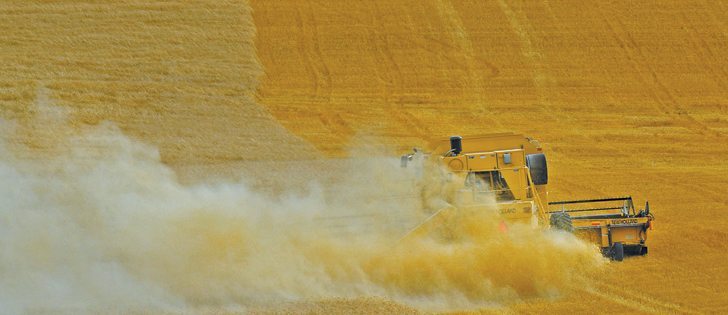Wheat quality good | Some problems with disease, mould found as final crops are harvested
This year’s grain harvest may not have been as big as some prairie producers had initially hoped, but it appears to have come off in reasonably good condition.
According to preliminary figures from the Canadian Grain Commission’s harvest sample program, wheat, lentils, flax and canola all came off in fairly good shape.
As of last week, nearly 80 percent of the red spring wheat samples submitted to the program qualified for the top two grades.
Twylla McKendry, program manager of analytical services with the commission, said grain quality analysts had reviewed 3,091 samples of western red spring wheat as of Oct 11.
Read Also

Organic farmers urged to make better use of trade deals
Organic growers should be singing CUSMA’s praises, according to the Canadian Chamber of Commerce.
Of those submissions, 1,370 samples (44.3 percent) graded No. 1 and 1,095 samples (35.4 percent) graded No. 2.
Another 436 samples (14 percent) graded No. 3.
“(Some) samples are downgrading because of fusarium, midge and mildew,” said McKendry. “But overall, wheat quality was pretty good.”
The quality of flax, lentils and canola also appears to be average or better.
Early-harvested flax came off in excellent shape, with mean oil content of 44.3 percent and 91 out of 91 samples grading No. 1.
Lentils, including green and red varieties, are also grading well.
Out of 202 lentil samples received by the commission, roughly 93 percent were graded No. 1 or No. 2.
Roughly 87 percent of the canola samples made the top grade.
More details on grain quality from this year’s sample program can be viewed on the grain commission’s website at www.grainscanada.gc.ca/index-eng.htm.
Western Canada’s harvest is now down to the short strokes, with all but a few thousand acres to be combined.
The harvest season started early in Manitoba, had few interruptions and wrapped up quickly, said Pam de Rocquigny, a spokesperson for Manitoba Agriculture.
As of last week, the vast majority of the province’s crops had been harvested, with the exception of a few remaining fields of sunflowers and corn.
“Crop quality was good,” de Rocquigny said.
“I think those hot, dry conditions that we saw during the harvest period definitely helped in terms of retaining the quality of that crop and getting it off in a timely fashion.”
In Saskatchewan and Alberta, harvest is down to less than one percent of total seeded acreage.
Grant McLean, crop management specialist with Saskatchewan Agriculture, said Mother Nature delivered outstanding harvest weather to most of the province’s growers this year, with good drying conditions, warm temperatures and little moisture.
In most years, the province’s agriculture ministry issues weekly crop reports and harvest updates until late October or early November, McLean said.
This year, the last report of the season was scheduled for release Oct. 18.
“The harvest season itself was very good,” McLean said.
“The only frustration for many producers were the high winds that damaged this year’s canola crop when we still had more than 50 percent of the acres out there. The canola crop in particular faced many challenges throughout the season, but that wind was probably the most frustrating.… It really hit those acres pretty hard.”
In Alberta, many grain and oilseed producers were disappointed with actual yields at harvest time after coddling what appeared to be a bumper crop.
James Wright, risk analyst with Alberta Agriculture, said grain and oilseed growers who were hoping for bumper yields received an unexpected surprise when they started combining.
“Basically, we’re looking at an average to just slightly above average crop,” Wright said.
“I think a lot of guys were a bit disappointed because their crops looked so good … but when they actually went into it and started combining, it just didn’t yield up (like they expected).”
Wright said crop quality in most areas of Alberta was good with the exception of canola, which had higher-than-normal greenseed counts in many regions.
According to estimates from Alberta Agriculture, only 81 percent of the province’s canola crop will grade No. 1 this year.
About 94 percent of the province’s hard red spring wheat and 99 percent of durum will fall into the top three grades.
Eighty percent of Alberta’s barley should grade 1CW or higher, the province said.
















